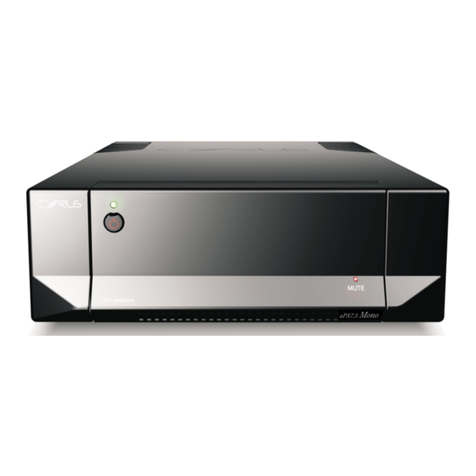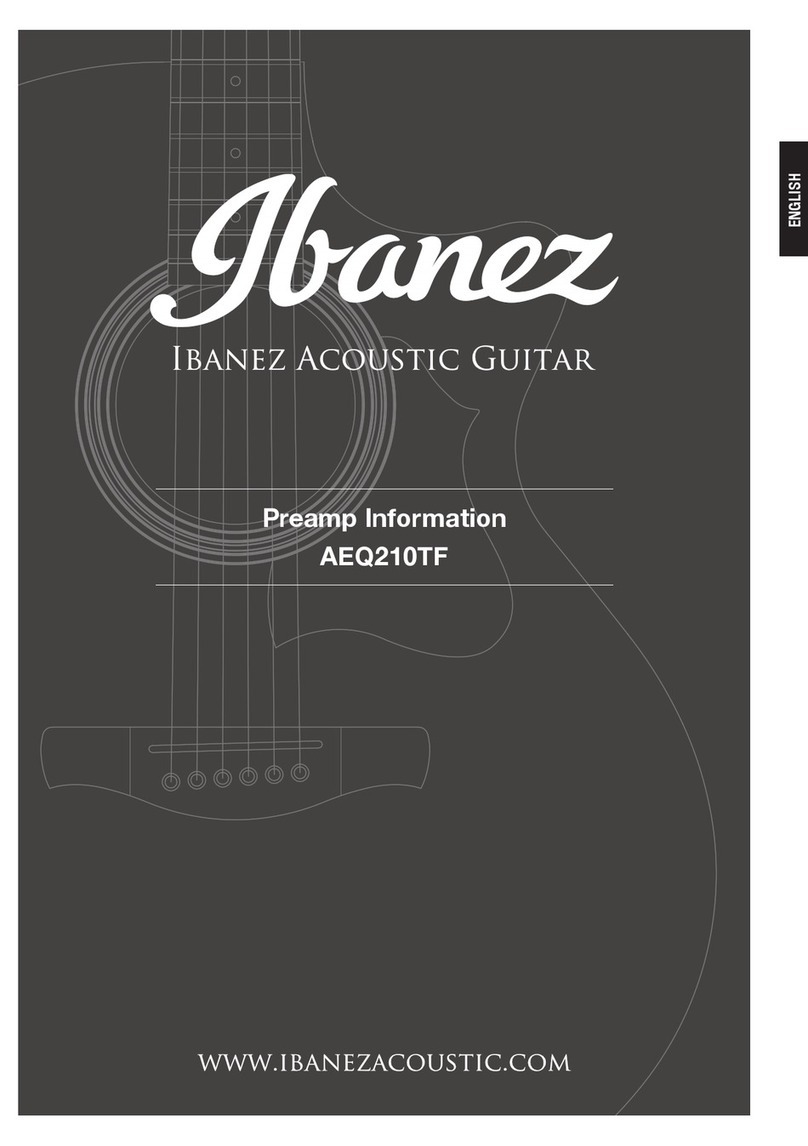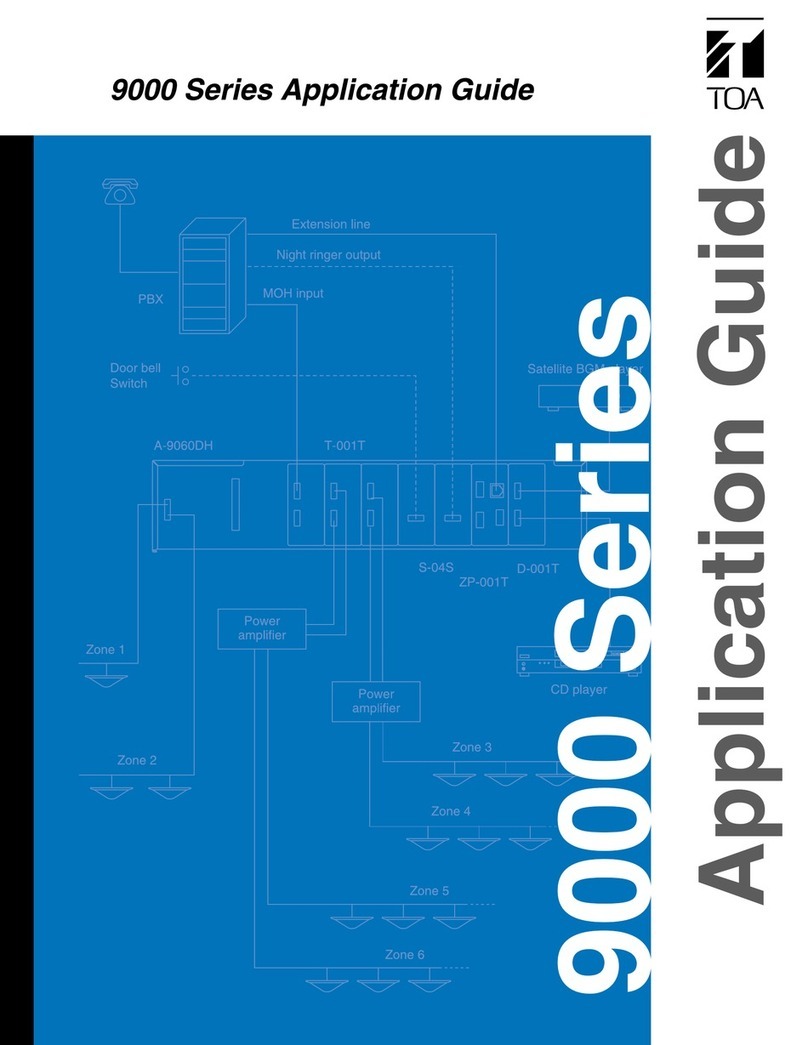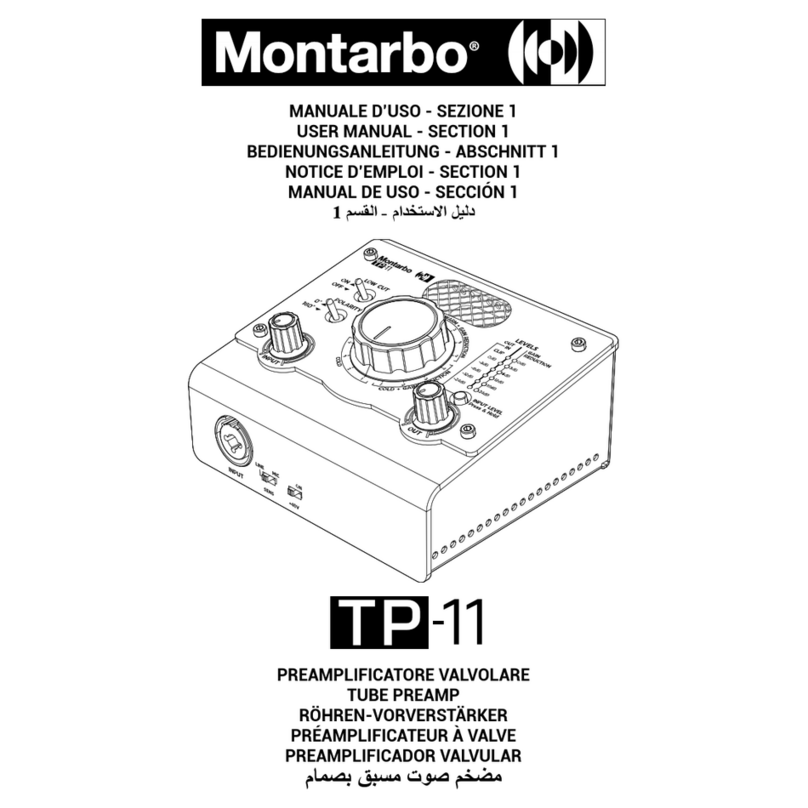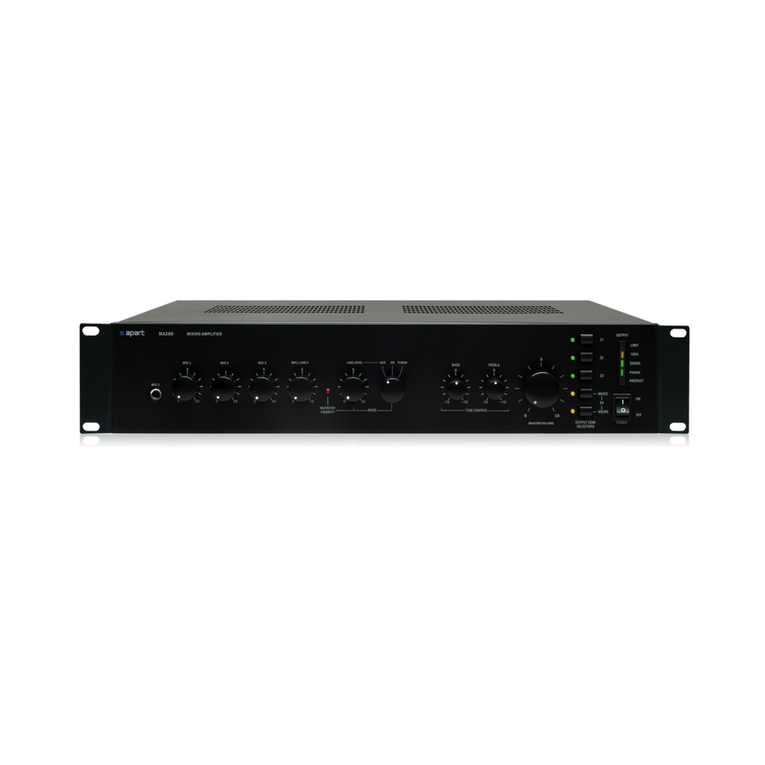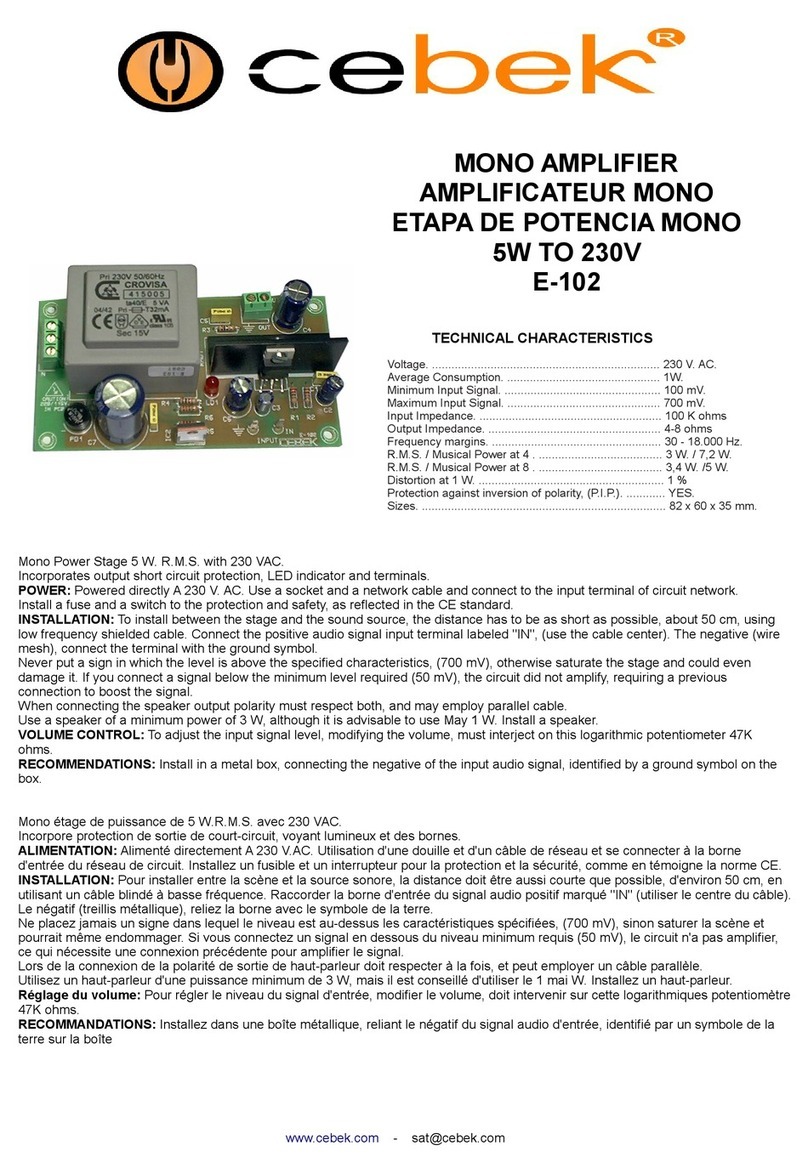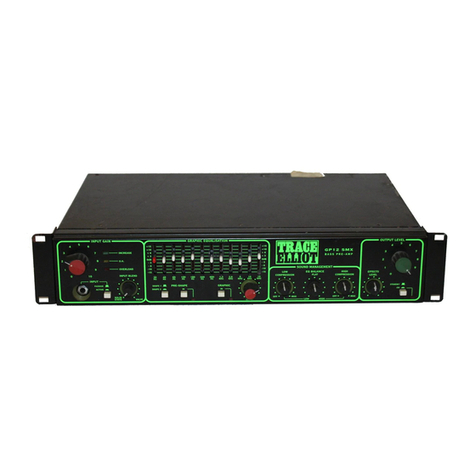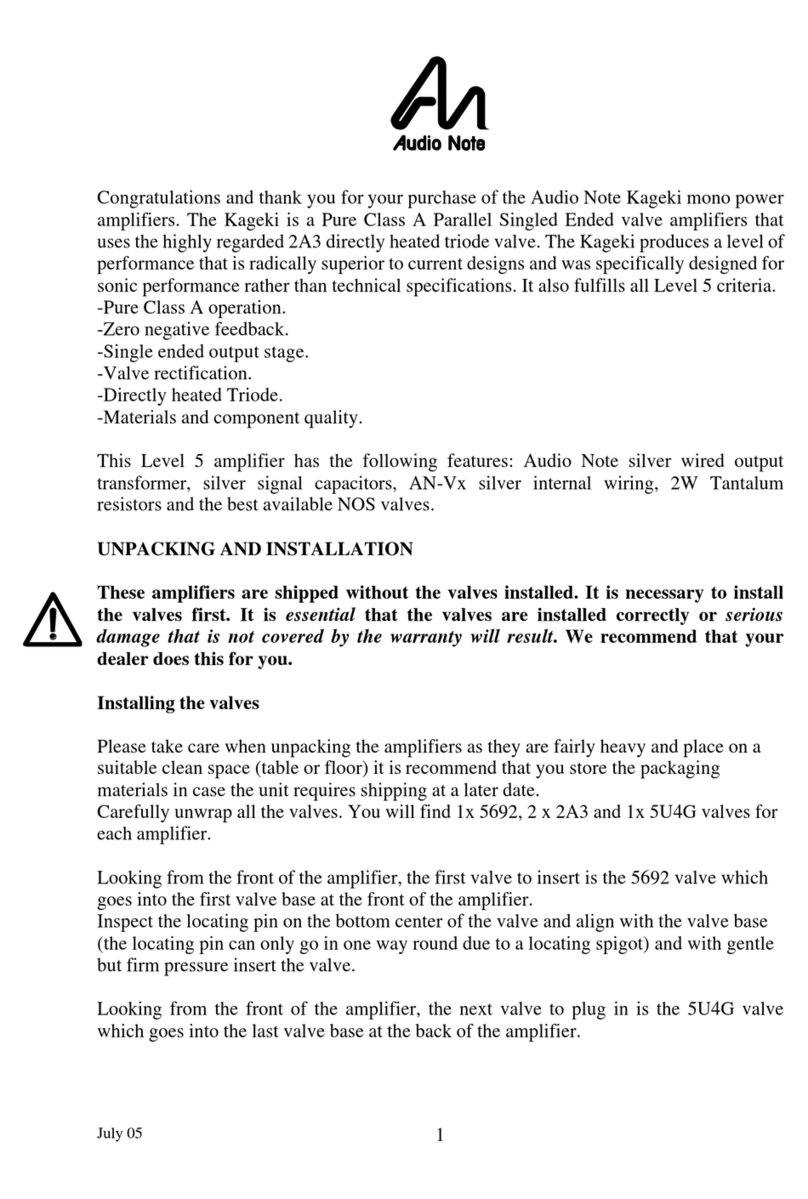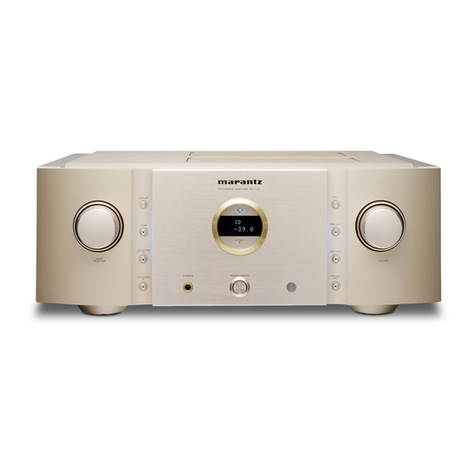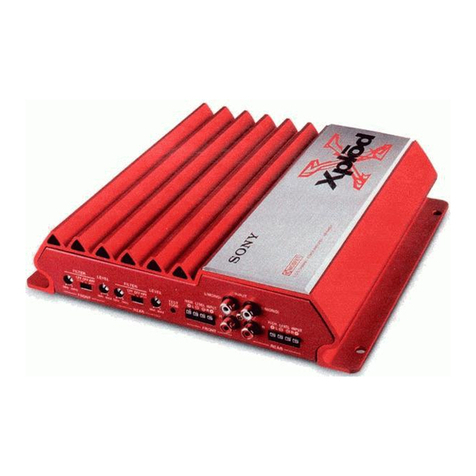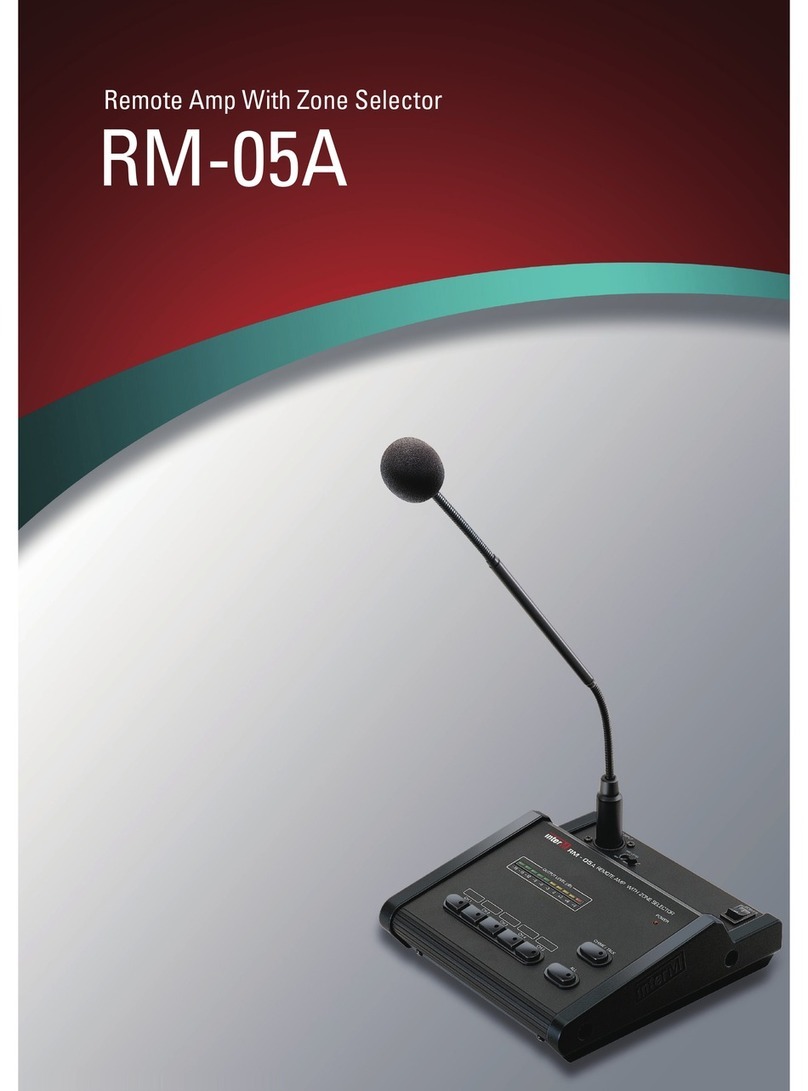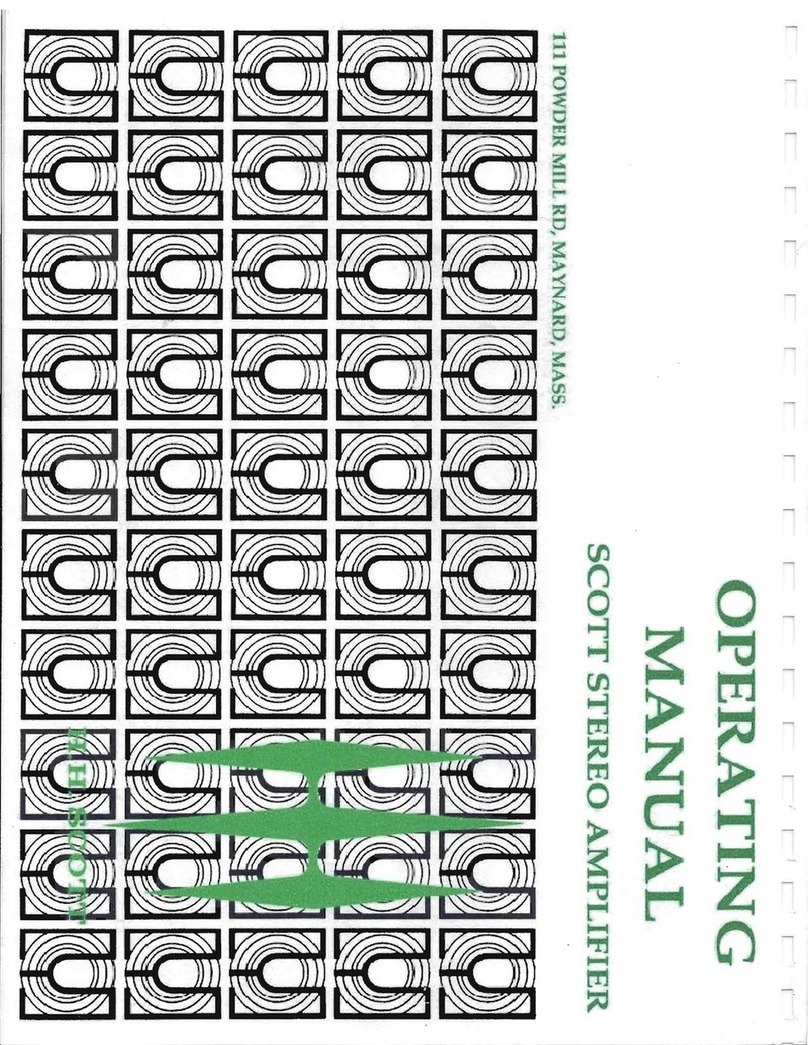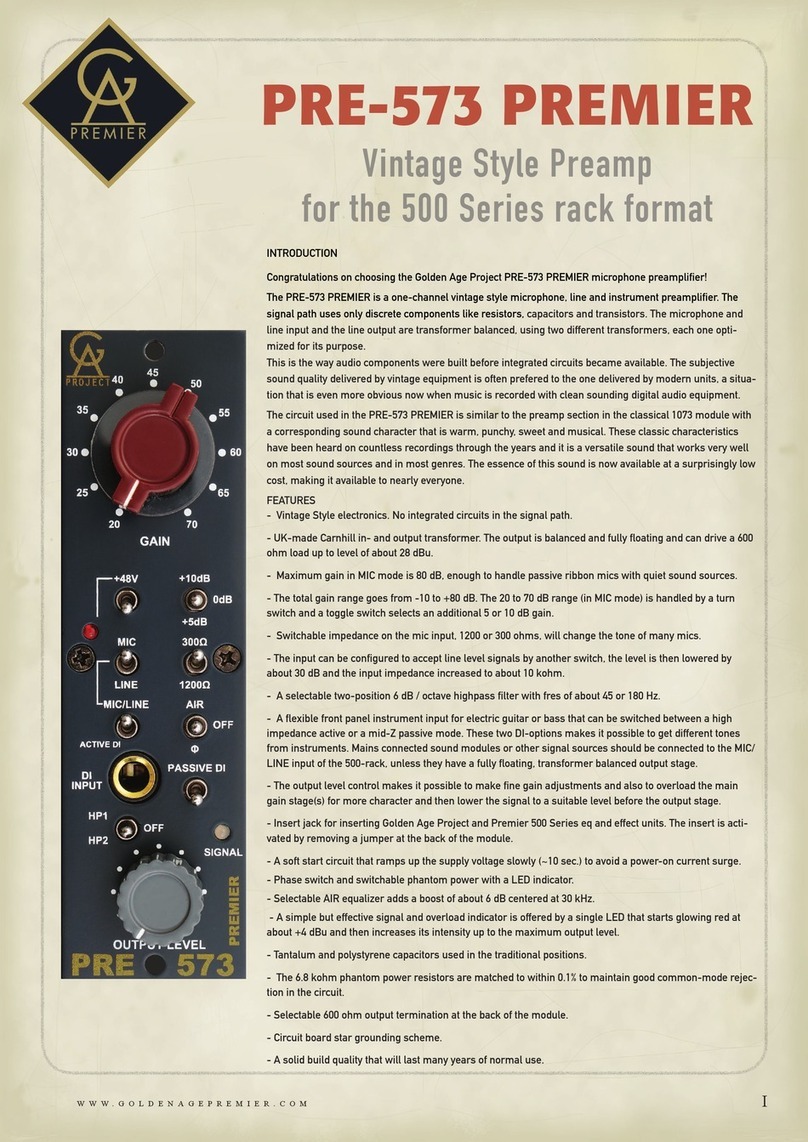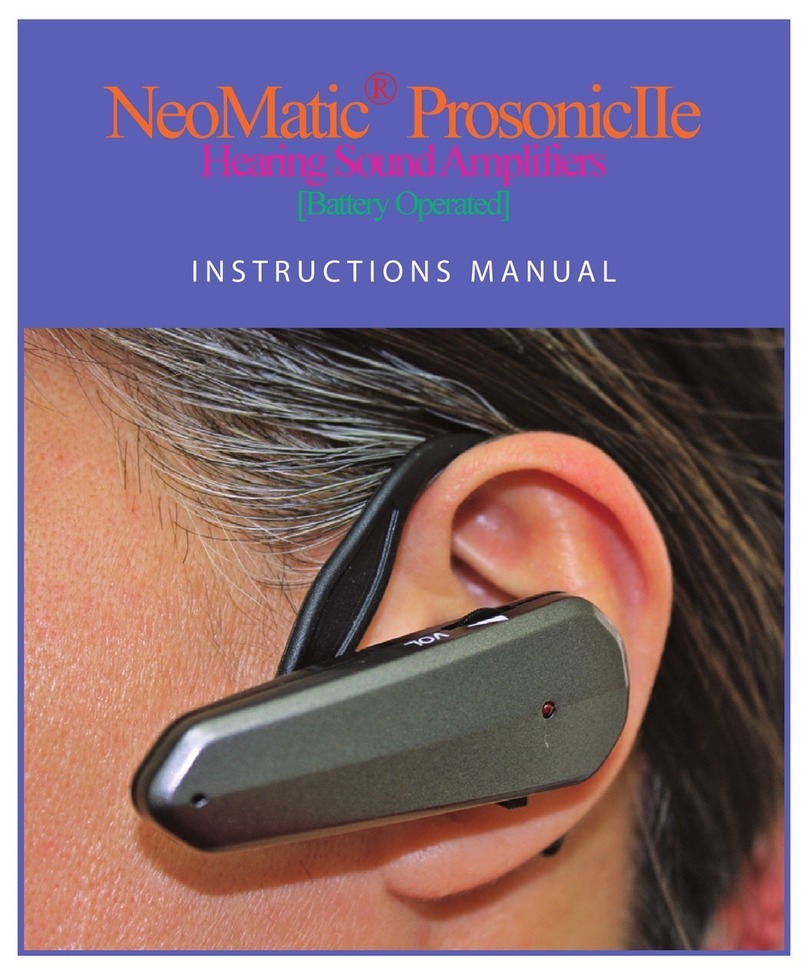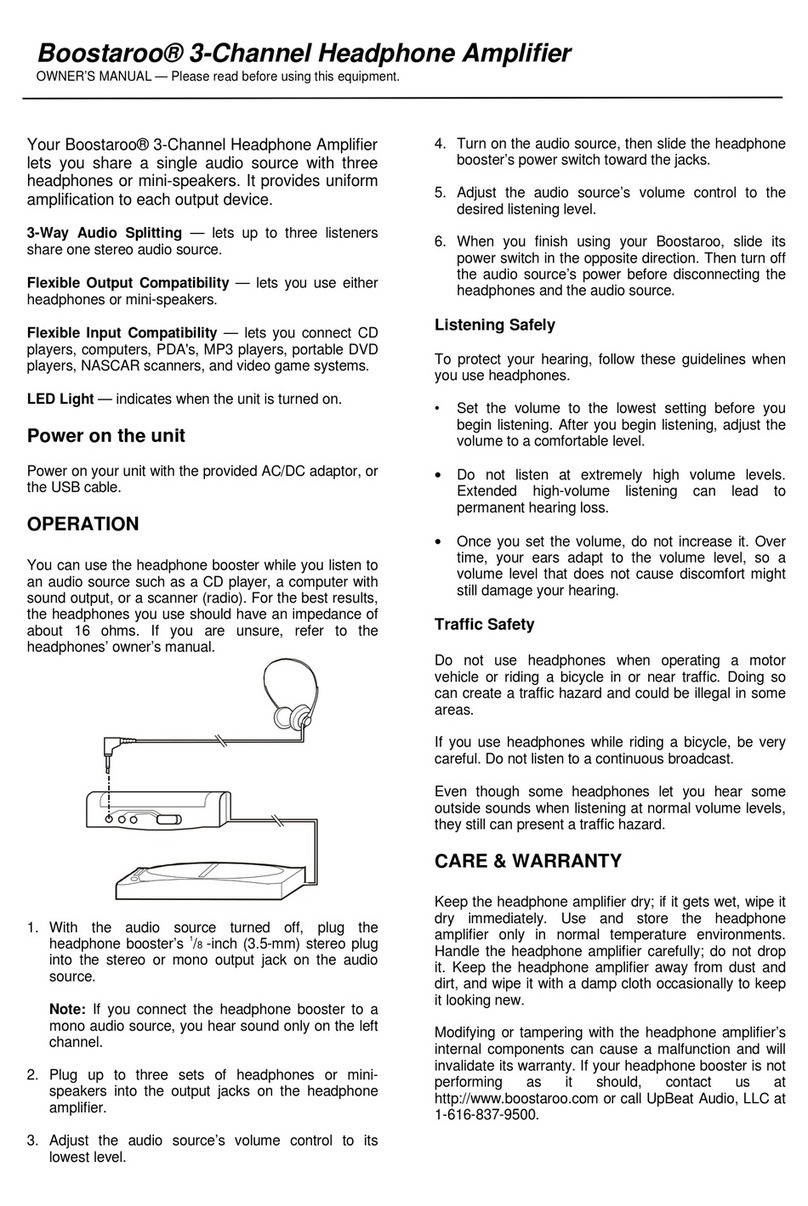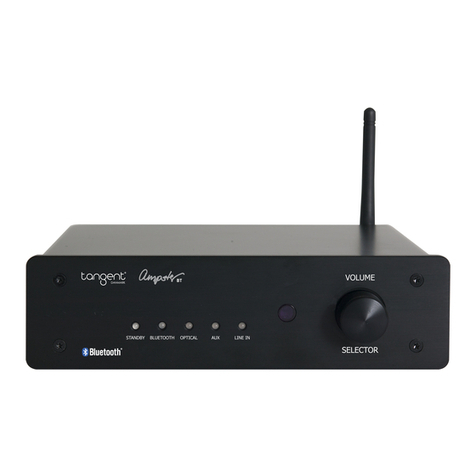Trinity Amps Tube Effects Loop User manual

[ 1 ]
Tube Effects Loop
Builders Guide
For the sole personal use of Trinity Amps Customers.
February 2020, Version 1.0
Parts © Trinity Amps 2005 –2020 & Saul Corral
www.trinityamps.com

[ 2 ]

[ 3 ]
Thank You
Thank you for purchasing your kit from Trinity Amps. We truly hope that you enjoy building it and that it will be
enjoyed for many years. If you have any questions please do not hesitate to contact us and. Please be sure to
check the package contents in case there are any missing items.
We are always looking for feedback from our Customers on our products. We have checked the build
instructions over thoroughly and are confident in our product. However, mistakes do happen so our advice is
that as you connect each wire and part according to the layout, cross-check against the schematic. If you find
any inconsistencies, or have any concerns, please let us know. Do not hesitate to contact us! We want this build
to be successful for you!
We’re confident that you will like our product and our support and when you’re completed, we’d appreciate
your comments posted on any of the internet forums such as thegearpage.net, 18watt.com, AX84.com or
trinityamps.com. You will find some extra business cards in the package. Please keep one and pass the rest
around.
We know you have a choice in suppliers and do appreciate your business. If there is any other product we can
provide to you or your associates, please get in touch and we will be happy to discuss requirements.
Sincerely,
Stephen Cohrs,
Trinity Amps
Web site: www.trinityamps.com
email: stephen@trinityamps.com


[ 5 ]
Contents
WARNING ...................................................................................................................................................................7
Please Read this Information Carefully ..............................................................................................................7
VERSION CONTROL.....................................................................................................................................................8
TUBE EFFECTS LOOP...................................................................................................................................................9
FX LOOP INSTALLATION........................................................................................................................................... 10
COMPLETE THE Fx BOARD................................................................................................................................... 10
INSTALLING THE OPTIONAL BYPASS SWITCH...................................................................................................... 10
INSTALLING THE FX LOOP.................................................................................................................................... 10
1. INPUT IN ...................................................................................................................................................... 11
2. OUTPUT OUT ............................................................................................................................................... 11
3. GROUND GND.............................................................................................................................................. 11
4. HIGH VOLTAGE B+ ....................................................................................................................................... 11
5. HEATER VOLTAGE........................................................................................................................................ 11
6. INSTALL THE FX BOARD ............................................................................................................................... 12
7. High voltage B+ Adjustment........................................................................................................................ 12
USING THE FX LOOP ................................................................................................................................................ 13
OSD TUBE FX INSTALLATION ................................................................................................................................... 14
TUBE FX TUBE REPLACEMENT................................................................................................................................. 15


[ 7 ]
WARNING
Please Read this Information Carefully
The projects described in these pages utilize POTENTIALLY FATAL HIGH VOLTAGES. If you are in any way
unfamiliar with high voltage circuits or are uncomfortable working around high voltages, PLEASE DO NOT RISK
YOUR LIFE BY BUILDING THEM.Seek help from a competent technician before building any unfamiliar
electronics circuit. While efforts are made to ensure accuracy of these circuits, no guarantee is provided, of any
kind!
USE AT YOUR OWN RISK:
TRINITY AMPS EXPRESSLY DISCLAIM ALL
LIABILITY FOR INJURY OR PROPERTY DAMAGE RESULTING FROM THIS
INFORMATION! ALL INFORMATION IS PROVIDED 'AS-IS' AND WITHOUT
WARRANTY OF ANY KIND.
REMEMBER: NEVER OPERATE YOUR AMP WITHOUT A LOAD. YOU WILL RUIN
YOUR OUTPUT TRANSFORMER!

[ 8 ]
VERSION CONTROL
Version
Date
Change
1.0
28April20
FIRST RELEASE

[ 9 ]
TUBE EFFECTS LOOP
This is a 6N17B sub-miniature dual-triode vacuum tube-based series FX loop. It employs high voltage, has zero-
loss, is built on a PCB and includes an optional true-bypass switch.
This all tube FX loop add-on module can be fitted to virtually any guitar tube amplifier.
The FX loop is optimized for insertion between preamp and driver stages, the low noise, non-clipping, analog
effects loop utilizes a 6N17B sub-miniature dual-triode vacuum tube. It is designed with a cathode-follower
send stage and a return gain stage both of which can be adjusted. The mounting requirements are simple
(Power, Ground, Signal In, Signal Out, 2 heater wires) and it is held in place by chassis mounting the ¼” jacks.
Power drain on the B+ is minimal and the unit features a voltage regulator to minimize noise and simplify
installation. This eliminated the need for a voltage dropping resistor. Similarly, heater current draw is minimal.
The 2 internal trim (level) pots that can be accessed directly through the jacks (no chassis removal) or internally
by using a small flat-bladed screwdriver.
The PCB footprint is small (3 holes), yet both the send and return levels can be adjusted for nearly any loop
requirement. Low cost stomp boxes and pedals work just as well as thousand-dollar rackmount effect units.
The Send is configured as non-interrupt, so it can be used as a Preamp/Slave Line Out. When no connection is
made, the unit accurately passes signal but there is also an optional panel mounted true bypass switch.
This FX loop kit makes inserting any effect or pedal, less intrusive to the tone of your OSD.

[ 10 ]
FX LOOP INSTALLATION
Installing this module will require you to work with high voltage. Previous experience with tubes and/or tube
amplifiers is mandatory. It’s recommended to have the module installed by an amp technician.
COMPLETE THE Fx BOARD
The Fx board has an option to determine the spacing of the SEND and RETURN jacks. They can be spaced 1 inch
or 1-1/2 inch apart. It may depend on whether you plan to install the optional BYPASS SWITCH or not.
You need to decide on the spacing and then locate and solder in place, the supplied, loose jack and trim pot.
The locations are printed on the Fx PCB.
INSTALLING THE OPTIONAL BYPASS SWITCH
When the cables are unplugged, and the PCB is powered, the Fx loop is bypassed, but some amps have bypass
switching options so you can easily
compare the Effect in and out of
circuit. So a DPDT switch is provided.
Desolder and remove 2 PCB jumpers
in the area of the IN / OUT PCB pads.
Prepare 6 - 26 ga wires about 6” long
to reach BYPASS switch chassis
mounting hole on chassis.
Connect each wire to the matching
switch lug.
Twist the wires together by rotating
the DPDT toggle switch to form a
bundle
Test with the amp off, that in BYPASS
mode, there is continuity between the
MV centre lug and PI input on eyelet
board.
Make sure to orient the switch so that
the BYPASS chassis labels match the
correct toggle position (down) and
install the switch.
INSTALLING THE FX LOOP
The installation requires you to connect an Input, OUTPUT, GROUND, HIGH VOLTAGE (B+) and HEATER
VOLTAGE. Use shielded wire for IN and OUT connections. The Fx board should be inserted between the preamp
and phase inverter. Typically, just before a PI input.
SEND
RETURN
TO
EFFECT FROM
EFFECT
OUTIN
B+
H IN
GND
TRIM TRIM
SEND RETURN
H IN
BYPASS
BYPASS
FX
REMOVE 2 PCB JUMPERS
TWIST
WIRES

[ 11 ]
Ensure that that the proximity of the Vacuum tube to components is no less than 1/4” . At that distance, the
temperature of the component will reach a safe 40 degrees C which is less than half the typical temperature
allowed.
1. INPUT IN Should come from the output of the preamp stage. This may be before or after a Master volume
or after the Treble control. Use coaxial cable to connect and connect the shields to the single Fx board ground
point. For noise elimination, you should never connect the shield of the cable at both ends. ONE END ONLY.
2. OUTPUT OUT Should go to your master volume if available or directly into the phase inverter input. Use
coaxial cable to connect and connect the shields to the single Fx board ground point. Only ground one end of the
cables.
3. GROUND GND Should be connected to your phase inverter ground or to the ground point associated to
where you took your B+ from. It is also used to ground shielded cable from input and output. Only ground one
end of the cables. Ground to same section of circuit you connected your B+ to.
4. HIGH VOLTAGE B+ It’s recommended to connect to the same section feeding your phase inverter tube or
the last preamp tube. Voltage must be at least 200V up to 450V. The Fx design has a built-in voltage regulator
that sets the voltage for the tube and plate voltage for longer tube life. However, before connecting the Fx
board, measure and record the B+ voltage you will be using for the Fx board.
5. HEATER VOLTAGE This tube only works with 6.3V AC or DC. Do not use 12.6V! Wires for this voltage are
connected to holes on sides of tube. If using 6.3VDC, positive can be on either side.
Connect twisted heater leads from a nearby tube socket. Always keep the leads close to the chassis to eliminate
induced hum and noise.

[ 12 ]
6. INSTALL THE FX BOARD With all the wires connected, remove the nuts from the SEND and RETURN jacks.
Fit them through the previously drilled holes in the chassis. Use the fibre washers to set the depth of thread in
the hole. Screw on the jack nuts back on to hold the Fx PCB in place. Tighten.
7. HIGH VOLTAGE B+ ADJUSTMENT Turn the amp on and if equipped with a Standby switch, place in Play
mode, ensuring that you have an adequate load connected to the speaker jack. Measure the B+ Fx board voltage
again, and compare to the previous measurement step 4. If the B+ has dropped more than 10VDC, it could
slightly affect the amplifier’s tone and dynamics - the more the difference in the original voltage the more affect
it will have on tone. If this is the case, changing the B+ second stage dropping resistor to a lower value will allow
the B+ to return to its original value. In many amps the resistor(s) are 10K (1-3W) or in a range of 6.8K-22K.
Experiment with replacing the resistor with another that has a value that is 2-10K less.

[ 13 ]
USING THE Fx LOOP
In stock configuration, installing the Fx Loop in active mode will reduce your SEND signal after the buffer
(cathode follower) stage of the circuit. On RETURN, the signal is input into a basic triode gain stage that adds
gain. Therefore, the Fx Loop can deliver a net signal that is higher. This can be trimmed by using the SEND and
RETURN internal trim pots internally or by inserting a small, flat bladed screwdriver through the jack itself. It can
also be trimmed via the output potentiometer on your effects rack if you have one, or via the amp's master
volume.
Start with both trim pots around 3 o clock (looking at it from the outside) and adjust from there. Keep in mind,
the higher the RETURN amplification, the more noise may be injected.
Start with an input signal and then adjust the SEND to high and adjust the RETURN to achieve unity gain or no
noticeable volume difference between SEND/RETURN when bypassed or unplugged.
Once the Fx loop is installed and set-up, connect a power cable and speaker cable, then power on the amp.
Connect an instrument cable, as well as two patch cables into the SEND and RETURN jacks. Connect them to
your effects unit. Put the amp in Play mode if equipped with a Standby switch. You should hear the effect added
to the signal when engaged. If there is no effect to the signal, ensure all cables are good, plugged in correctly,
and the amp controls are adjusted properly.

[ 14 ]
OSD TUBE FX INSTALLATION

[ 15 ]
TUBE FX TUBE REPLACEMENT
The 6N17B is a military grade miniature vacuum tube and is unlikely to ever require replacement. However, the
following guide will help should that occur. Desolder the pins of the tube. Replace as per drawing below.
Table of contents
Other Trinity Amps Amplifier manuals

Trinity Amps
Trinity Amps TRIP TOP User manual

Trinity Amps
Trinity Amps Trinity Tweed Amp User manual
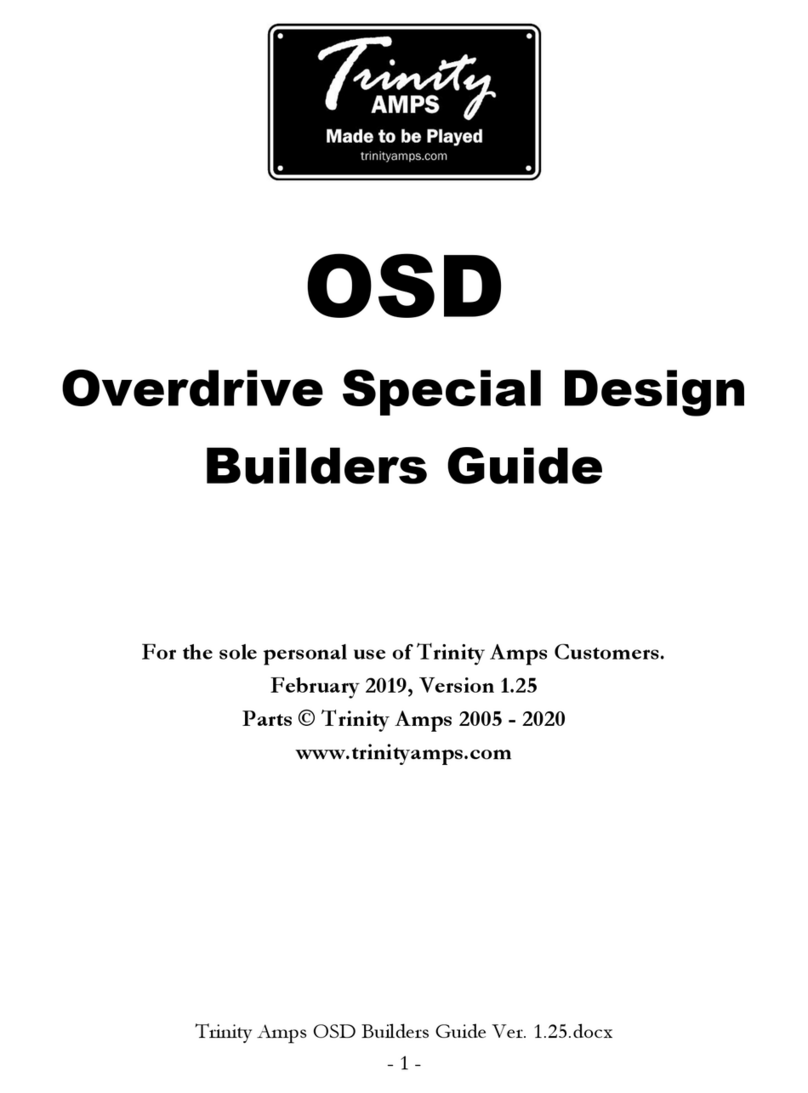
Trinity Amps
Trinity Amps OSD User manual
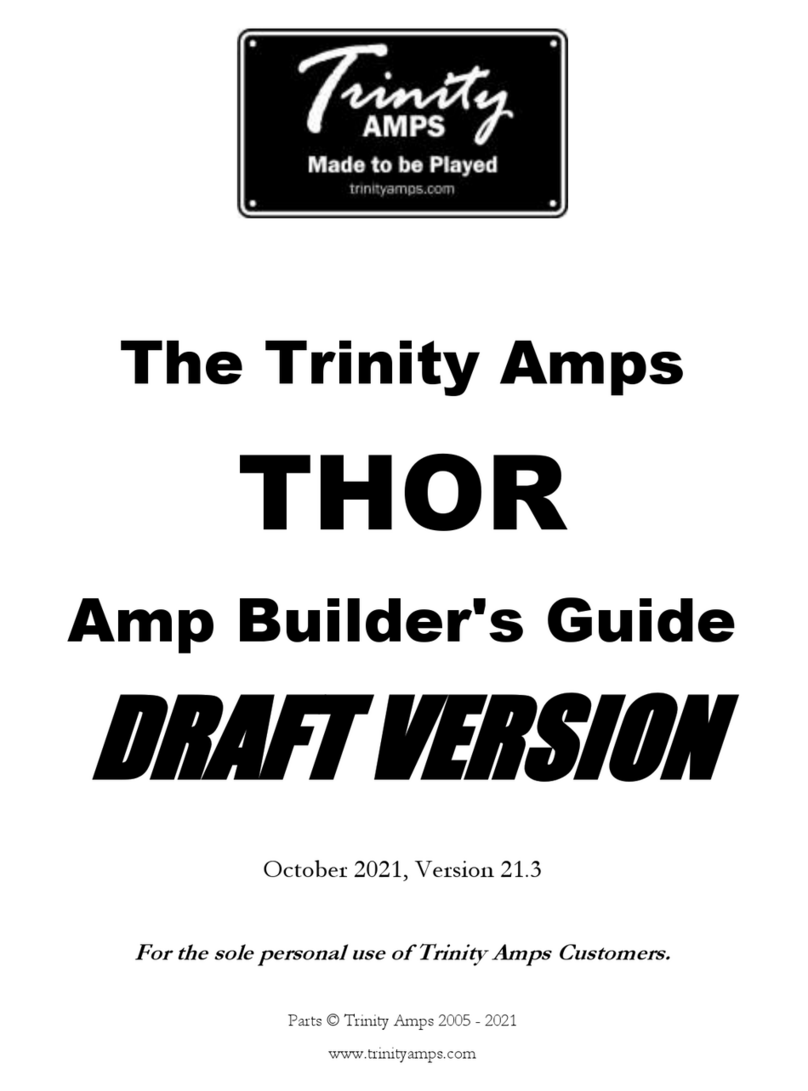
Trinity Amps
Trinity Amps THOR User manual
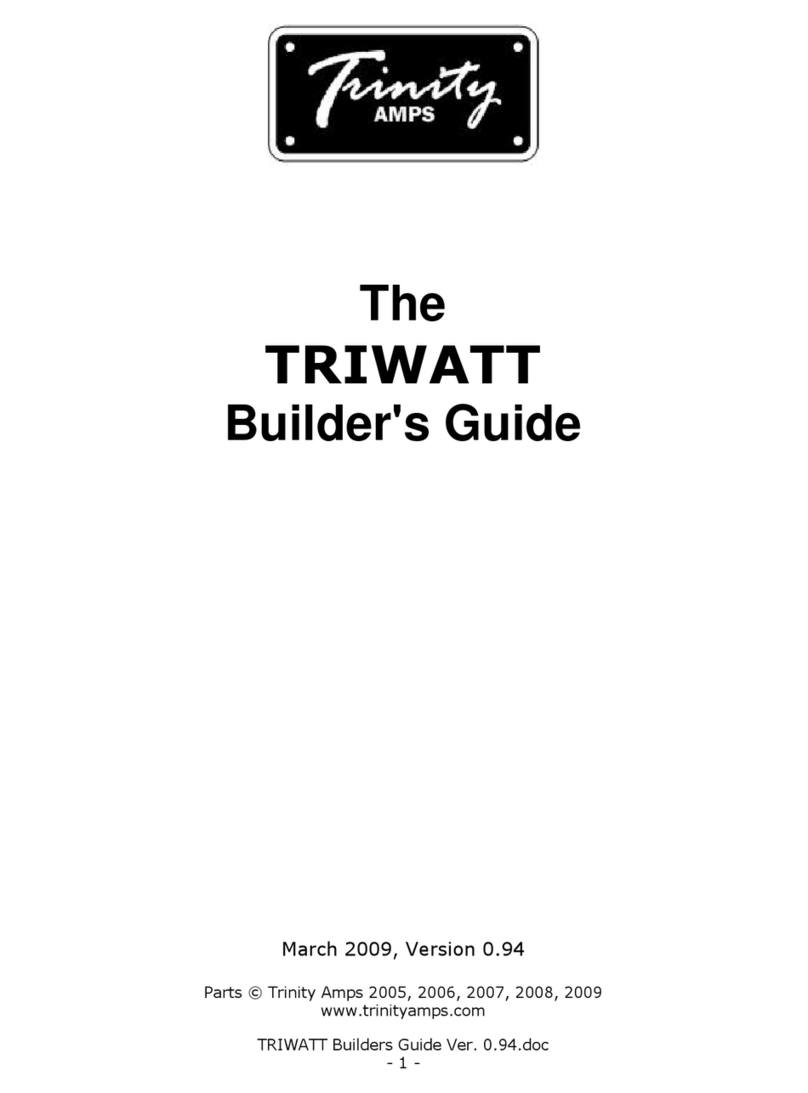
Trinity Amps
Trinity Amps TRIWATT User manual
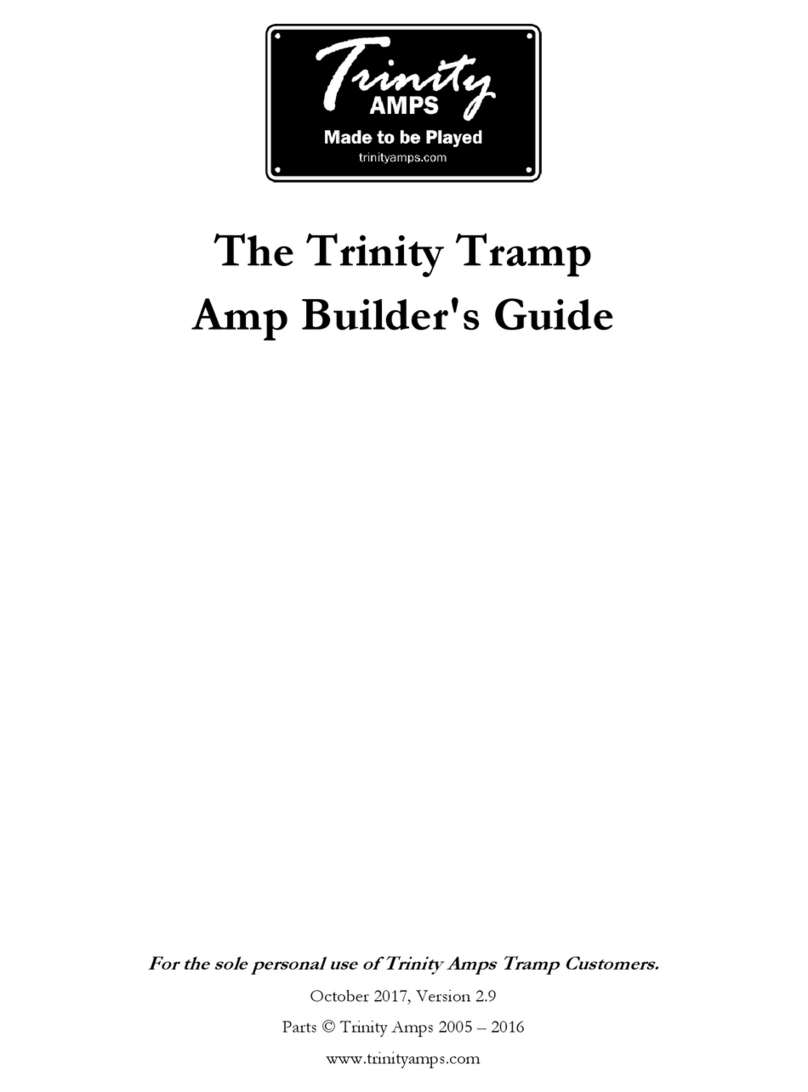
Trinity Amps
Trinity Amps Tramp User manual
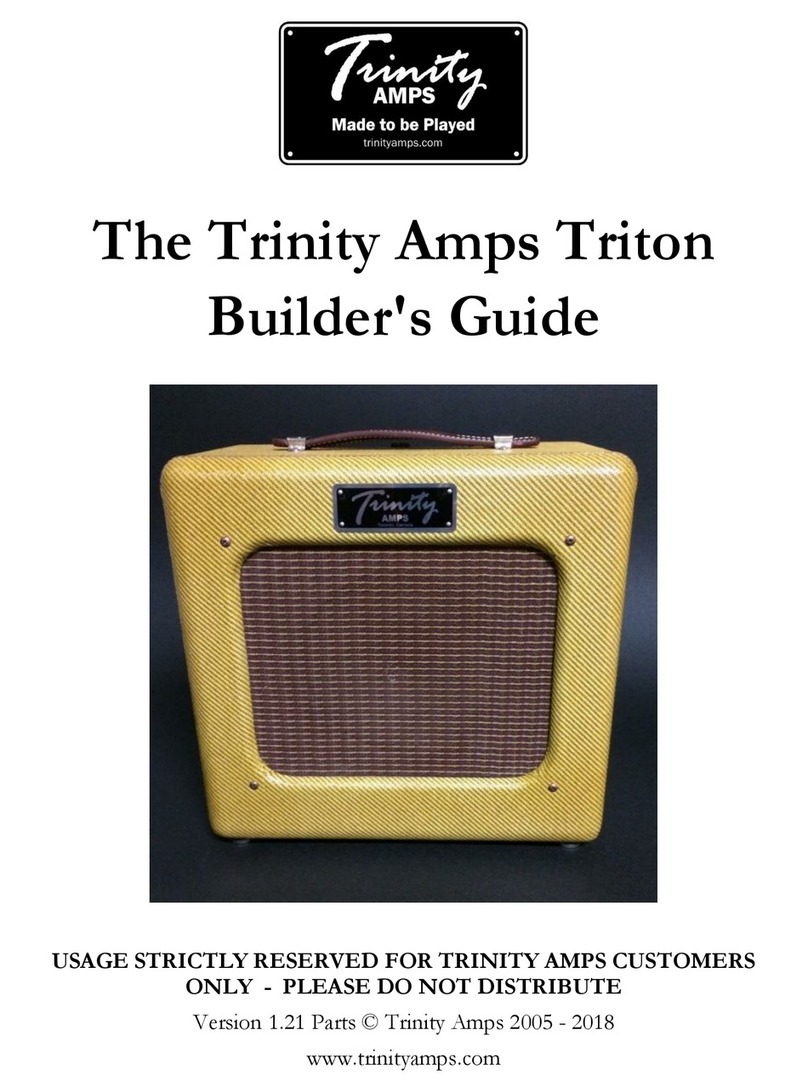
Trinity Amps
Trinity Amps Triton User manual
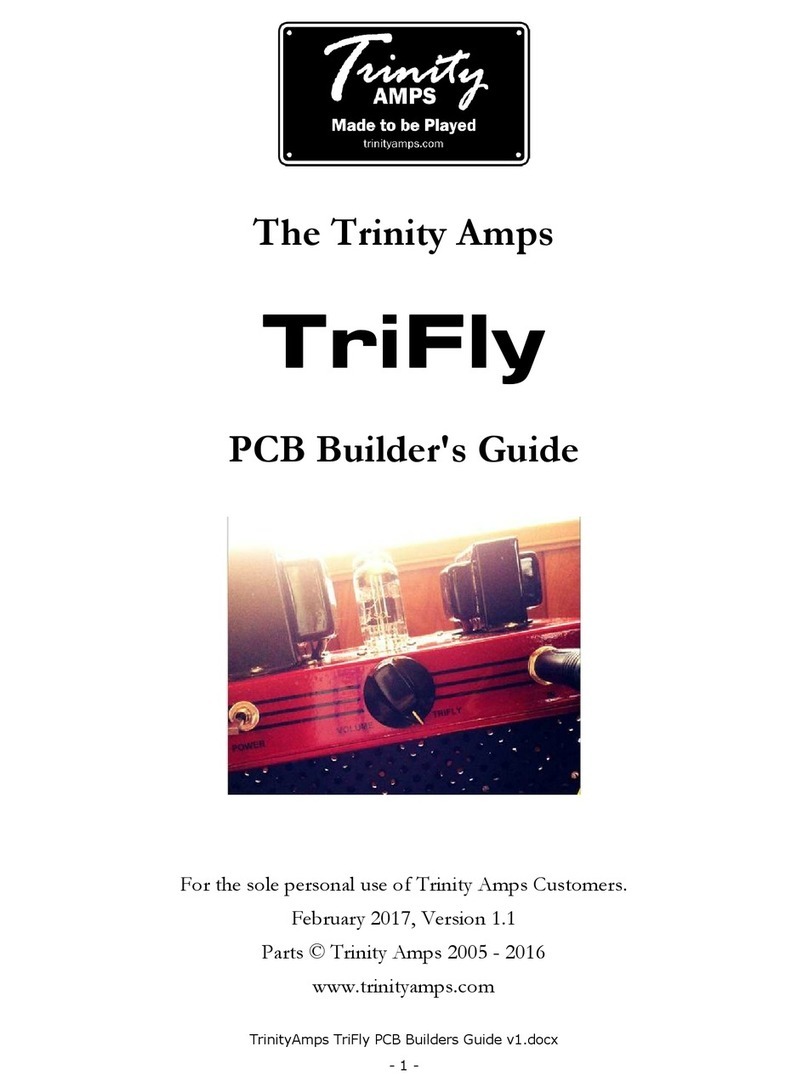
Trinity Amps
Trinity Amps TriFly User manual
